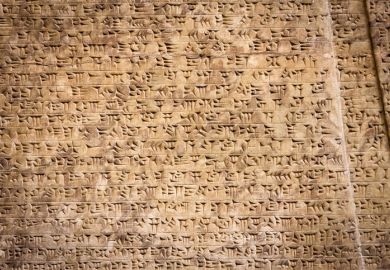It is true, as Simon Schama reminds us in his jazzy introduction to this pleasing little volume, that most Britons are likely to think of Nathaniel Hawthorne as "the epitome of New England austerity and demon-driven repression". Hawthorne was born in Salem, Massachusetts, in 1804, the descendent of one William Hathorne, scourge of Quakers; William's son John presided over the witch trials of 1692.
Fine Puritan stock then, and indeed his best-known work, The Scarlet Letter , serves to reinforce the impression - although a closer inspection will bring different thoughts to mind: Schama recalls first reading it "with goggle-eyed disbelief".
Certainly, it is true that Hawthorne's work is guided by the moral compass of his time, but it is also true that those very strictures heighten the manner in which his luxuriant prose seems to struggle against them.
Rappaccini's Daughter , the first of three tales included here, offers an ideal introduction to the unexpectedly florid world of the one-time gauger of salt and coal (customs officer).
Hawthorne found success in 1837 with the publication of his Twice-Told Tales . As Schama writes, "it was as though Hawthorne had become a 'finder' of stories which were immanent in the ancestral culture of America itself".
Rappaccini's Daughter , published nine years later, also has the frame of traditional narrative or, at least, a story retold - the author claims its source is one "M. de l'Aubépine".
The story tells that once upon a time, in a land far away, there was a young man called Giovanni Guasconti who fell in love with a maiden. The maiden in question is spied from his window as she wanders below in a gorgeous garden.
He discovers that she is the daughter of one Dr Rappaccini, of whom it is said that "he cares infinitely more for science than for mankind". His garden is thus a poison garden. The maiden, Beatrice, has been raised among these plants; she alone is immune to their venom but, it soon becomes clear, she has become venomous herself. Yet her young admirer is, to his great cost, undeterred.
The language of this Gothic tale is as febrile as its plot. Beatrice's beauty and energy are "bound down and compressed, as it were, and girdled tensely, in their luxuriance, by her virgin zone". The plants in the garden are "fierce, passionate and even unnatural", their flowers compared to "unearthly face(s)". What are we being told here? What does Hawthorne want us to think? Beatrice calls herself "sister" to one sinister shrub, although we are told that her own heart is pure, somehow escaping the corruption that has been infused into her body. Yet spiritual purity cannot avert her body's fate.
The other two tales in this book are Young Goodman Brown and A Select Party , the former another haunted investigation of how, precisely, we may distinguish between thoughts and deeds, the latter a lightweight flight of fancy. But Rappaccini's Daughter and, to a lesser extent, Young Goodman Brown , offer a good reminder of the strange and passionate heart that beat in Hawthorne's upright breast - and that its power survives to this day.
Erica Wagner is literary editor, The Times .
Rappaccini's Daughter
Author - Nathaniel Hawthorne
ISBN - 1 84391 035 7
Publisher - Hesperus
Price - £6.99
Pages - 90
Register to continue
Why register?
- Registration is free and only takes a moment
- Once registered, you can read 3 articles a month
- Sign up for our newsletter
Subscribe
Or subscribe for unlimited access to:
- Unlimited access to news, views, insights & reviews
- Digital editions
- Digital access to THE’s university and college rankings analysis
Already registered or a current subscriber? Login



